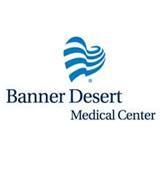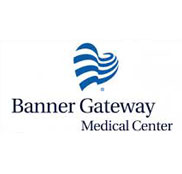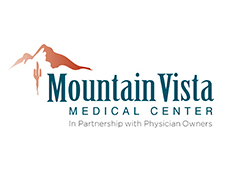Cardiomyopathy
What is cardiomyopathy?
Cardiomyopathy is a disease of the heart muscle characterized by its numerous symptoms, causes, and treatments. When the heart muscle becomes thick, enlarged or rigid, cardiomyopathy occurs. Sometimes, scar tissue replaces heart muscle. The heart weakens as cardiomyopathy worsens, growing more enfeebled and increasingly unable to sustain a healthy rhythm. When this occurs, the heart can no longer distribute sufficient oxygen-rich blood throughout the rest of the body.
What are the common symptoms of cardiomyopathy?
Breathlessness and a buildup of fluid in the lungs, ankles, feet, legs or abdomen as well as swelling of the legs are common symptoms of cardiomyopathy. If the disease progresses, its can lead to heart failure because the heart can no longer pump enough blood to meet the body’s needs.
Is cardiomyopathy dangerous?
Certain individuals who have cardiomyopathy have no signs or symptoms and need no treatment. In others, the cardiomyopathy progresses swiftly. They experience severe symptoms and may incur other serious complications. Cardiomyopathy weakens heart and can cause heart failure as well as other complications including heart valve problems.
Is there more than one type of cardiomyopathy?
There are four types of cardiomyopathy: dilated, hypertrophic, and restrictive and arrhythmogenic right ventricular.
What characterizes dilated cardiomyopathy?
The most common form of the disease is dilated cardiomyopathy. Generally, it affects adults between the ages of 20 and 60. Women are less likely to incur dilated cardiomyopathy. This disease affects the ventricles (the heart’s lower chambers) as well as the atria (the upper chambers). Often, it originates in the left ventricle, the heart’s primary pumping mechanism. The heart muscle stretches and become thinner (dilates), forcing the inside of the chamber to enlarge. As the disease progresses, this dilating and enlarging may start to happen in the other chambers of the heart. A heart with dilated chambers cannot contract correctly. As a result, it no longer is able to pump blood correctly. A heart that is weakened in this manner may succumb to heart failure. Dilated cardiomyopathy also may trigger arrhythmias (irregular heartbeats), heart valve problems, and blood clots in the heart.
What characterizes hypertrophic cardiomyopathy?
Hypertrophic cardiomyopathy is very common and can affect people at any time in their life. Nearly 1 out of every 500 people is afflicted by this disease which strikes as many women as men. Hypertrophic cardiomyopathy occurs when heart muscle cells enlarge and cause the walls of the ventricles, most often the left one, to thicken. Despite this thickening, the ventricle size often remains normal. However, at the same time, this thickening may block blood flow out of the ventricle. If this happens, the condition is called obstructive hypertrophic cardiomyopathy.
Sometimes, the partition which separates the right from the left side of the heart (the septum) thickens and bulges into the left ventricle. This blockage can inhibit blood flow out of the left ventricle, forcing the ventricle to work harder as it tries to maintain proper flood flow. Symptoms can include syncope (fainting), shortness of breath, chest pain or dizziness. Hypertrophic cardiomyopathy also can distort the heart’s mitral valve so that instead of blood’s flowing forward through the valve properly, it leaks backward.
On occasion, the thickened heart muscle is unable to block correctly blood flowing out of the left ventricle. This is called non-obstructive hypertrophic cardiomyopathy. Alternatively, the whole ventricle may become thicker, or thickening may occur just at or near the bottom of the heart. As the thickened muscle makes the inside of the left ventricle smaller, it reduces the amount of blood it can contain. The walls of the ventricle also may become stiffer; as a result, the ventricle struggles to relax enough to fill with the correct amount of blood. These changes can increase the ventricle’s blood pressure as well as pressure in the lung’s blood vessels. Certain cells in the damaged heart muscle may be altered in such a way as to disturb electrical signals controlling normal heartbeat. These alterations can produce irregular heartbeat (arrhythmias).
What characterizes restrictive cardiomyopathy?
Restrictive cardiomyopathy mostly affects older adults, causing their ventricles (lower heart chambers) to stiffen and become rigid. This occurs when abnormal tissue, such as scar tissue, replaces normal heart tissue. As a result, the ventricles can no longer relax normally and cannot fill with blood properly; this forces the atria (upper heart chambers) to enlarge. As the disease progresses, blood flow through the heart decreases and can bring on other problems including irregular heartbeats (arrhythmias) or heart failure.
What characterizes arrythmogenic right ventricular cardiomyopathy?
Arrhythmogenic cardiomyopathy occurs only rarely, when scar tissue takes the place of dead muscle tissue in the right ventricle. This substitution disturbs the electrical signal system which controls heartbeat and can trigger an irregular heartbeat (arrhythmia). Symptoms may include syncope (fainting) and palpitations following physical activity.
What factors increase your risk of cardiomyopathy?
Several risk factors increase the likelihood of your experiencing cardiomyopathy. These include: diabetes and related metabolic conditions, or severe obesity; a family history of sudden cardiac arrest, heart failure, or cardiomyopathy; long-term alcoholism; a condition or disease which can bring on cardiomyopathy, such as coronary heart disease, heart attack, or a viral infection which triggers heart muscle inflammation; long-term high blood pressure; and other damaging heart diseases.
How is cardiomyopathy treated?
Lifestyle changes, surgery, medicines, implanted devices to correct arrhythmias, or certain nonsurgical procedures are common among the treatments for cardiomyopathy. These various therapies can help decrease the likelihood of complications, manage symptoms, and prevent the disease worsening.
Is cardiomyopathy a common condition?
Cardiomyopathy can be inherited or acquired. You acquire a disease when you are not born with it, but it develops in conjunction with another factor, condition or disease. When your parents pass on to you the gene for the disease, you inherit it. Very often, the cause of cardiomyopathy is unknown. It is a disease which can occur in young and old alike; however, certain types of cardiomyopathy occur more frequently at certain ages.











